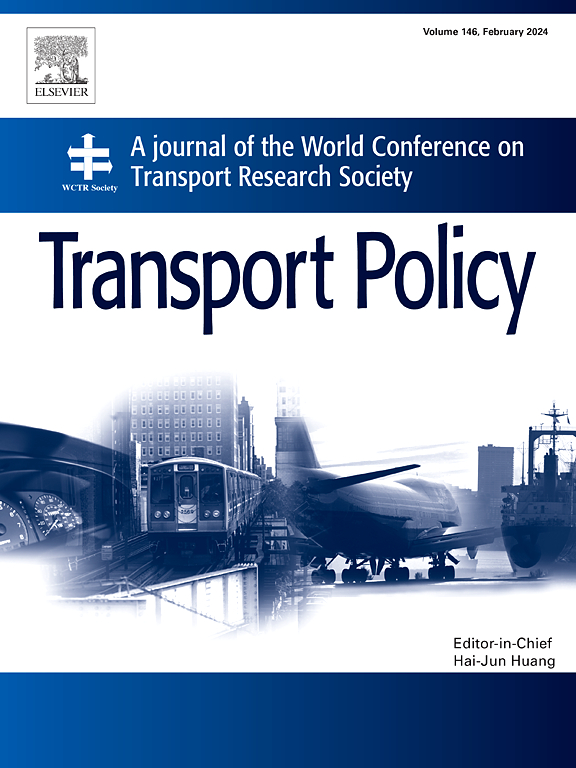美国城市和区域空中交通(URAM)和搬迁决策:来自机器学习支持的路径分析的见解
IF 6.3
2区 工程技术
Q1 ECONOMICS
引用次数: 0
摘要
城市和区域空中交通(URAM)使用电动垂直起降(eVTOL)飞机在城市和区域内部和之间提供高效、可持续的运输。虽然现有的研究主要集中在公众的兴趣和采用市区规划的意愿上,但它对住宅和工作场所搬迁决策的潜在影响仍未得到充分探讨。通过大幅减少出行时间,URAM可能会打破日常通勤者的传统位置限制。本研究调查了美国各地1000多人,以评估URAM的看法及其对搬迁决策的影响。路径分析和机器学习技术的结合——包括Naïve贝叶斯、k近邻、随机森林、支持向量机和神经网络——被用来探索社会人口因素、旅行行为、URAM感知和搬迁决策之间的联系。结果表明,较高的收入和技术性职业与URAM兴趣呈正相关,而年龄较大、家庭规模较大和拼车习惯呈负相关。受教育程度、收入和通勤偏好也决定了URAM在多大程度上被视为搬迁的替代选择。路径分析揭示了复杂的间接影响,其中一些影响放大或逆转了直接影响。例如,这项研究的见解表明,城市交通规划应考虑到农村居民和老年人口的使用差异,支持高科技工人的流动性,并预测未来垂直机场枢纽周围的土地利用变化。本文章由计算机程序翻译,如有差异,请以英文原文为准。
Urban and regional Air Mobility (URAM) and relocation decisions in the United States: Insights from a machine learning-supported path analysis
Urban and Regional Air Mobility (URAM) uses electric vertical takeoff and landing (eVTOL) aircraft to offer efficient, sustainable transportation within and between urban and regional areas. While existing studies have primarily focused on public interest and willingness to adopt URAM, its potential implications for residential and workplace relocation decisions remain underexplored. By substantially reducing travel times, URAM may disrupt conventional location constraints for daily commuters. This study surveys over 1000 individuals across the United States to assess perceptions of URAM and its influence on relocation decisions. A combination of path analysis and machine learning techniques—including Naïve Bayes, K-Nearest Neighbors, Random Forest, Support Vector Machine, and Neural Networks—is employed to explore the associations among sociodemographic factors, travel behavior, URAM perceptions, and relocation decisions. Results indicate that higher income and employment in technical occupations are positively associated with URAM interest, while older age, larger household sizes, and carpooling habits are negatively associated. Educational attainment, income, and commuting preferences also shape the extent to which URAM is considered as an alternative to relocation. Path analysis reveals intricate indirect effects, some of which amplify or reverse direct influences on relocation behavior. The insights from this study suggest that, for example, URAM planning should account for access disparities for rural residents and older populations, support mobility for high-tech workers, and anticipate land use changes around future vertiport hubs.
求助全文
通过发布文献求助,成功后即可免费获取论文全文。
去求助
来源期刊

Transport Policy
Multiple-
CiteScore
12.10
自引率
10.30%
发文量
282
期刊介绍:
Transport Policy is an international journal aimed at bridging the gap between theory and practice in transport. Its subject areas reflect the concerns of policymakers in government, industry, voluntary organisations and the public at large, providing independent, original and rigorous analysis to understand how policy decisions have been taken, monitor their effects, and suggest how they may be improved. The journal treats the transport sector comprehensively, and in the context of other sectors including energy, housing, industry and planning. All modes are covered: land, sea and air; road and rail; public and private; motorised and non-motorised; passenger and freight.
 求助内容:
求助内容: 应助结果提醒方式:
应助结果提醒方式:


